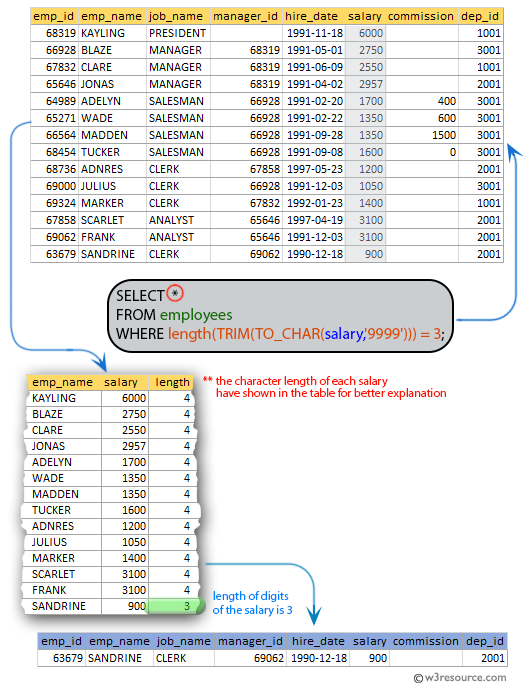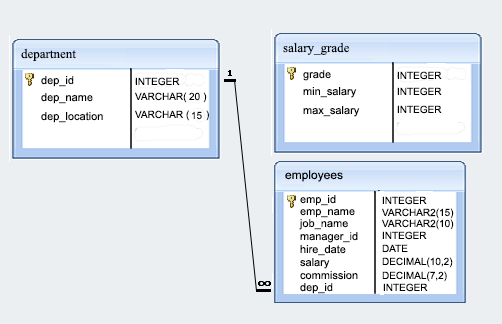SQL Exercise: List those employees whose salary contain only 3 digits
[An editor is available at the bottom of the page to write and execute the scripts.]
32. From the following table, write a SQL query to identify employees whose salaries contain only three digits. Return complete information about the employees.
Sample table: employees
Pictorial Presentation:
Sample Solution:
SELECT *
FROM employees
WHERE length(TRIM(TO_CHAR(salary,'9999'))) = 3;
Sample Output:
emp_id | emp_name | job_name | manager_id | hire_date | salary | commission | dep_id --------+----------+-----------+------------+------------+---------+------------+-------- 63679 | SANDRINE | CLERK | 69062 | 1990-12-18 | 900.00 | | 2001
Explanation:
The said query in SQL that selects all columns from the table 'employees' where the length of the salary value, after converting it to a 4-character string with leading zeros, is equal to 3.
The TO_CHAR converts the "salary" column to a character string using the format mask "9999", which means that the salary value will be displayed with leading zeros if necessary to make it 4 digits long. The TRIM function removes any leading or trailing spaces from the resulting string.
The WHERE clause checks if the length of the resulting string after trimming any spaces is exactly 3 characters long.
Go to:
PREV : List those employees whose salary is an odd value.
NEXT : List the employees who joined in the month of APRIL.
Practice Online
Sample Database: employees
Have another way to solve this solution? Contribute your code (and comments) through Disqus.
What is the difficulty level of this exercise?
Test your Programming skills with w3resource's quiz.


